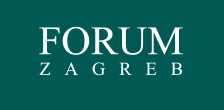12 Ideas to Help Manage Information Overload
Protect your attendees from information overload, here are a 12 ideas to keep that from happening at your event.
 If your event is a good one, chances are there’s a lot to do. The days/hours are packed with incredible speakers and there’s tons of inspiration everywhere. Fantastic, right? But that’s not the case for everyone. Sometimes an event can be too inspiring. Sometimes there’s so much information, and so many ideas, that your attendees go blank from information overload.
If your event is a good one, chances are there’s a lot to do. The days/hours are packed with incredible speakers and there’s tons of inspiration everywhere. Fantastic, right? But that’s not the case for everyone. Sometimes an event can be too inspiring. Sometimes there’s so much information, and so many ideas, that your attendees go blank from information overload.
Daniel Levitin, author of “The Organized Mind: Thinking Straight in the Age of Information Overload,” wrote, “I’ve read estimates there were 30 exabytes of information 10 years ago and today, there’s 300 exabytes of information.” While more information is a good thing, that’s not always the case for our brains. The human mind is designed to process three or four things at the same time. Levitin says, “If you get much beyond that, you begin to exercise poorer judgment, you lose track of things and you lose your focus.”
Don’t let this happen to your attendees. If you do, the experience won’t be as enjoyable and they’re less likely to act on any of the inspiration once they get back to the real world. Instead, help them manage the information with these meeting design ideas.
Provide Breaks
Hour after hour of back-to-back sessions is not ideal. Even if they’re interactive and engaging, if there aren’t any breaks between sessions or if breaks are very small, attendees won’t have time to process and digest the info. Like gorging on meal after meal, after a while, it becomes hard to stomach and they’ll lose interest. Instead, give them time to think about what they just learned or experienced and allow time to talk it over with other attendees.
Host a Conversation Oasis
In addition to breaks, create a space where attendees can go and talk with others about what they experienced. Rehashing is a way of processing and opening up the conversation between attendees is a great way for them to continue the learning and the experience without piling more on.
Provide Talking Points
Provide talking points on your event app so when they have time later they can review the pieces from their favorite sessions. This also gives them jumping off points for when they get back to the office or among their peers and they want to share what they learned. Access to recorded sessions is even better.
Create a Game
Play a trivia game on what was learned or discussed. This will help people recall information in a fun way.
Suggest Postcards or a Journal
One of the best ways to avoid information overload is to capture the information and let it go. This can be done through encouraging attendees to take notes or journal their takeaways. Another great way to handle takeaways or actionable items is to tell attendees to come to the event with a stack of stamped postcards. On each postcard, urge them to write the important details from the session or the things they want to implement when they get home. Then have them mail the postcards to themselves the last day of the event. The postcards should arrive a few days after they do and just in time for them to tackle their newly created to-do list. By writing down the important takeaways, they’re releasing them from their minds.
Establish Fun Outlets
Some event planners are getting into adult fun zones that encourage attendees to take a break and return to an activity from childhood that they enjoyed. This could be using coloring books or playing board games. You could even organize a kickball tournament. The activity matters less than the break. Give attendees some time for a little mental relaxation.
Keep the Schedule Light
Keep the schedule light after heady sessions. This gives attendees time to process those weighty lessons. If you have powerful session after powerful session, attendees will get a headache and the messages will get lost.
Allow Breaks for Office Time
We all know that while the attendee may have paid a large fee to attend your event, there’s little chance they are disconnected from the office. Another reason for allowing breaks is for them to handle issues that crop up at work. If they can check in and solve the problems, those little fires won’t be plaguing them at the conference. They can give your sessions more attention, if they have time to stay connected back home. The same goes for their personal lives. It’s hard to focus if they feel there’s something lingering.
Host Heavy Sessions Mid-Morning
Studies have shown that decision fatigue is a real thing. The more decisions you make early on, the fewer reserves you have for them later. If you have weighty material being presented, cover it early in the day. Out of respect for your night owls, you needn’t schedule it for 7:30 a.m. but it’s best to do it early rather than late.
Keep Things as Organized as Possible
Disorganization creates fatigue. If you have materials, information, or other things that can be organized, do so. You could even create organization tips for a better event experience for your attendees or give out personal organizers to capture all of the information they’ll be receiving at your event.
Create Themes
Creating themes and chunking certain sessions together can help attendees process ideas of the same theme. For instance, dedicating an afternoon to the future of your industry, helps attendees focus on a theme bringing organization to their minds, even if those sessions offer different solutions, they’re all arranged around a similar idea – the future.
Offer Time with Exhibitors Away from the Exhibit Hall
Some event planners schedule exhibit hall hours as downtime between weighty sessions, but this can have the opposite effect. Once attendees enter the hall, they are inundated with even more information and now they’re facing sales pitches. Instead, create times for exhibitors and attendees to mingle outside of a hall. For example, a meet and greet at the pool with the opportunity to schedule more in-depth time in a casual atmosphere will feel more like a break and less of a pitch. Or host fun team activities between exhibitors and attendees by matching them with what they’re both looking for.


